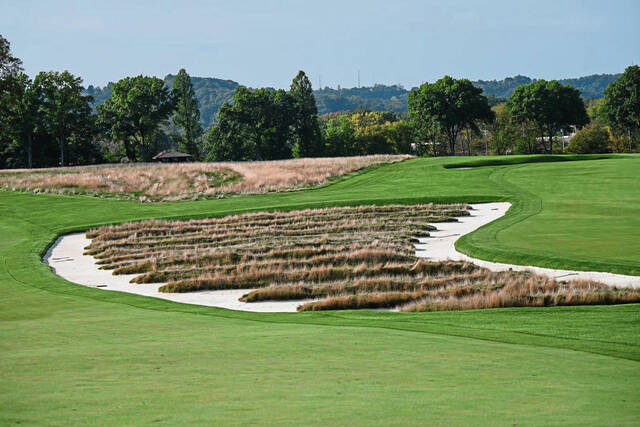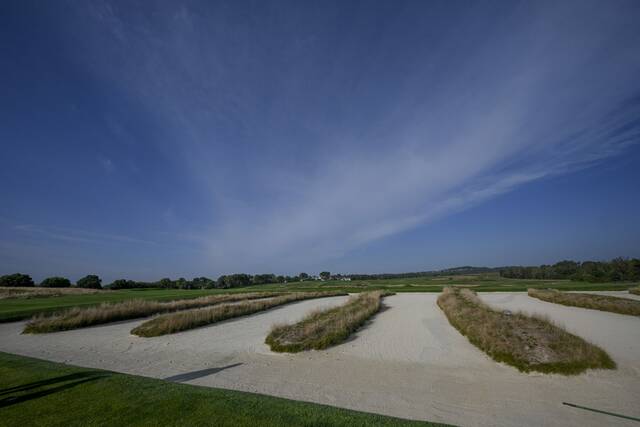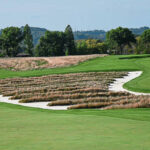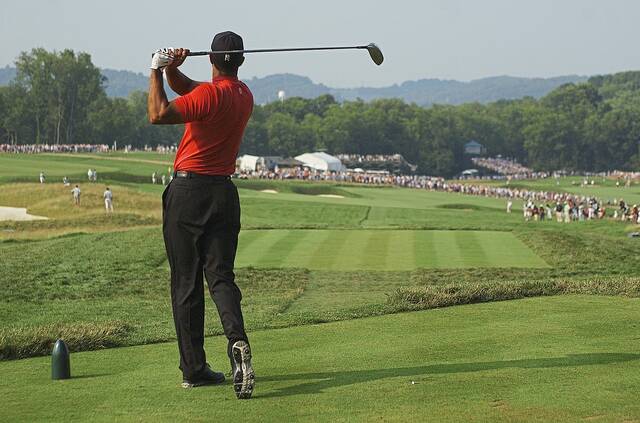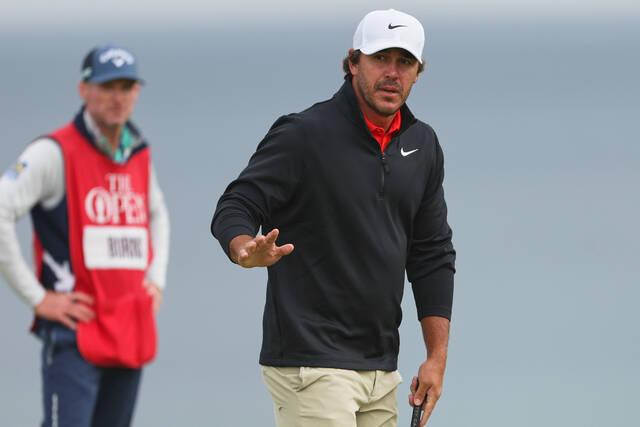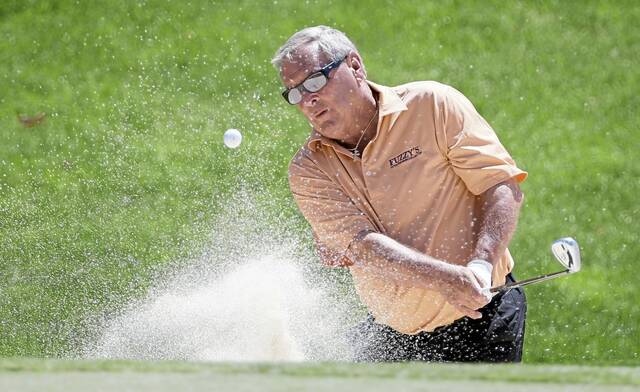If Rory McIlroy hits a tee shot into a bunker next week at Oakmont Country Club, he’ll have a weekend hacker from the early 1900s to blame for its location.
Architect Henry Fownes designed the historic course in 1903 and continued to alter its landscape as he watched where golfers hit their shots.
Legend says Fownes stood on the clubhouse porch, taking notes as golf balls slid and rolled and bounced throughout the hilly terrain.
Soon after, he had greenskeepers install sand traps in those very spots where balls landed, eventually creating 300-plus bunkers along the 191-acre track.
Fownes famously said, “A shot poorly played should be a shot irrevocably lost.”
That philosophy has continued nearly 125 years and several restorations later. Though more than 5,000 trees were removed and about 100 of those bunkers have disappeared or been combined with others over the past several decades, sand traps are still some of the defining characteristics of one of the world’s most challenging tests of golf.
When the 125th U.S. Open tees off June 12, the world’s best golfers will be welcomed by nearly 200 bunkers, an average of more than 11 per hole.
“I’ve learned from playing a lot at Oakmont you just can’t be aggressive,” said Darin Kowalski, an amateur from Bethel Park who won the Tri-State Open at Southpointe Golf Club on Tuesday. “When you are in those bunkers, if you have any question whether the ball will hit the lip or not, my experience is there is an 80% chance it will. The vast majority of time, I take my medicine and wedge out to the fairway.”
The Oakmont Country Club course underwent some renovation work over the past few years to bring the bunkers back to their original design, under the guidance of architect Gil Hanse.
Related
• Breakfast with Benz U.S. Open at Oakmont retrospective: Goodbye Arnold Palmer, hello Ernie Els in 1994• How to 'go low' at Oakmont? Make some putts, get some breaks, says Western Pa. native who once carded 66
• Hosting the U.S. Open is worth the disruption to Oakmont Country Club members
“We rebuilt every bunker hazard in the past two years,” said Mike McCormick, director of grounds.
Crews worked to reposition some bunkers and soften them on the bottom, adding drainage below, as well as replacing the sand. There were adjustments to the shape, face and lips.
During the 2016 U.S. Open, when 3 inches of rain fell, grounds crews and volunteers had to pump water from bunkers and fix the faces overnight. This renovation should help alleviate that type of potential damage.
“In working closely with the club, Gil did a tremendous job in restoring what Oakmont has historically been, you know, back to what it was in the Fownes era,” said Scott Langley, the USGA’s senior director for player relations and a member of the course set-up team. “When Gil came back in, he kind of looked at it and said, ‘OK, we’re going to strategically balance options but also challenge’ and come up with kind of his version of Fownes’ greatest hits for each hole. There were various versions of each hole that Gil found drawings and photos of and archives, and he created his kind of greatest hits.”
The famed Church Pews have undergone constant renovations since they went from being six separate bunkers to one bunker with six rows for the 1935 U.S. Open. The hazard grew to eight rows in 1973 and to 12 ahead of the 2007 U.S. Open. Hanse’s most recent renovation added a 13th pew.
The Church Pews are among many notable bunkers at Oakmont, including the lengthy “Sahara” trap on the 300-yard par 3 eighth, the mini Church Pew “Piano Keys” along the left of the 15th fairway and the “Big Mouth” bunker next to the 17th green, a drivable par-4.
While those hazards get the spotlight during the U.S. Open, it will be many others that have the players’ attention. Awkward lies and positioning in dozens of fairway and greenside bunkers will force players to revert to hitting out sideways or backward to avoid striking the face.
“They lowered the lips a little bit to make it seem like you can get out of them, but it just depends on where it’s positioned,” said Gregor Meyer, a Fox Chapel grad who won the 2016 WPIAL championship at Oakmont. “If you don’t have a shot to the green, you are always thinking where’s the next-best opportunity I can get to. If I’m 150 yards from the green, do I need to advance it forward or just get it out and hit my next shot.”
That type of thinking likely will prove critical for the pros next week if they hope to navigate the penalizing traps around Oakmont Country Club.



